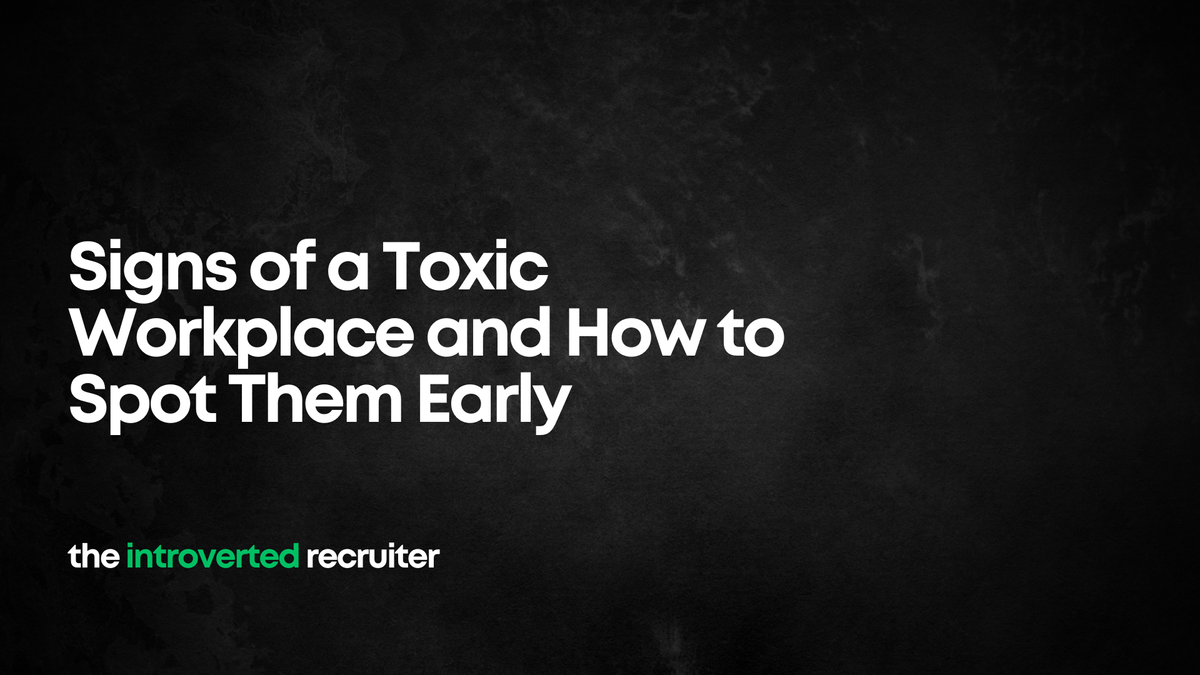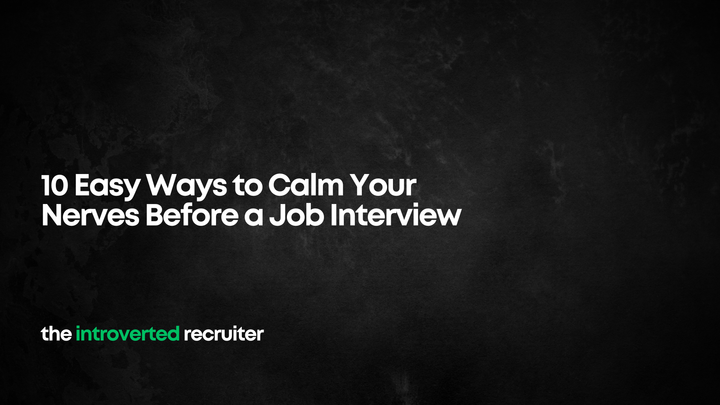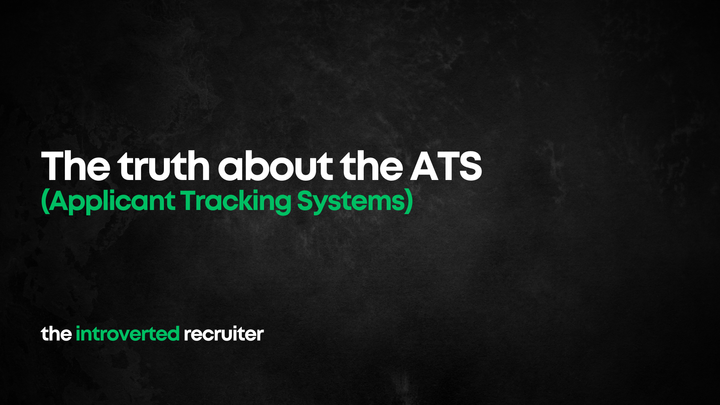Signs of a Toxic Workplace and How to Spot Them Early

Working in a toxic environment can take a serious toll on your career, mental health, and even your personal life. Toxic workplaces don’t just make your 9-to-5 unbearable; they can leave you questioning your skills, your goals, and even your self-worth. That’s why it’s essential to recognise the signs early—whether you’re considering a new job or reflecting on your current situation.
In this deep dive, we’ll explore the key signs of a toxic workplace and how to protect yourself from the fallout.
1. The Culture is Driven by Fear
One of the most obvious hallmarks of a toxic workplace is an atmosphere of fear. Fear-driven cultures thrive on intimidation, creating an environment where employees feel constantly on edge. This could manifest as fear of making mistakes, fear of challenging leadership, or fear of losing your job.
In these settings, decision-making often grinds to a halt because employees are too scared to take risks. Innovation and creativity? Forget it. Everyone is focused on self-preservation.
What it looks like in practice:
- Managers punish mistakes rather than treat them as learning opportunities, often publicly shaming employees.
- People avoid speaking up in meetings or sharing ideas for fear of being shot down.
- High-pressure “emergency” meetings feel more like interrogations than productive problem-solving.
If your workplace is more focused on assigning blame than finding solutions, it’s time to question if the fear-based approach is something you can—or should—tolerate.
2. Psychological Safety is Non-Existent
Psychological safety is the foundation of a thriving workplace. It means being able to express ideas, admit mistakes, or raise concerns without fear of being ridiculed or retaliated against. In a toxic workplace, this safety net is missing.
The impact on employees:
- Team members are afraid to challenge decisions, even when they know a better approach exists.
- Mistakes are hidden rather than acknowledged, leading to unresolved issues and worsening performance.
- Leaders dismiss employee feedback or concerns with phrases like “That’s just how we do things here,” effectively shutting down dialogue.
Without psychological safety, collaboration and trust deteriorate, leaving individuals feeling isolated and undervalued.
3. Poor Communication Practices
Toxic workplaces are notorious for their lack of clear and transparent communication. Whether it’s last-minute updates, conflicting instructions, or outright misinformation, poor communication fosters confusion and mistrust.
How this shows up:
- Critical information is not shared openly, creating a “need-to-know” culture where only select individuals are kept in the loop.
- Gossip and rumours thrive in the absence of clear communication channels, leading to distrust among colleagues.
- Employees are blindsided by changes, from new policies to restructuring, because leadership doesn’t prioritise effective communication.
A workplace that can’t communicate effectively will struggle to function smoothly, let alone succeed in the long term.
4. Micromanagement Rules the Day
Micromanagement is more than just a bad habit—it’s a toxic behaviour that undermines employee autonomy and morale. In workplaces where micromanagement is the norm, leaders refuse to trust their teams to get the job done, resulting in a stifling and demoralising environment.
What it feels like:
- Every small decision needs management’s approval, no matter how trivial.
- Managers constantly hover, second-guessing and questioning employees’ methods.
- Employees feel their skills and judgment are undervalued, leading to frustration and disengagement.
Micromanagement not only slows down productivity but also chips away at employees’ confidence and job satisfaction.
5. Favouritism and Cliques
Workplaces that feel more like high school than professional environments often suffer from cliques and blatant favouritism. This dynamic creates a divisive atmosphere, where some employees feel privileged while others are left out in the cold.
Signs of favouritism:
- Certain employees are given opportunities or resources that others never have access to, regardless of merit.
- Managers make decisions based on personal relationships rather than performance or qualifications.
- Social dynamics dominate professional interactions, with cliques excluding others from key conversations or decisions.
This behaviour fosters resentment, disrupts teamwork, and sends a clear message: merit doesn’t matter here.
6. High Employee Turnover
High turnover rates are often a glaring indicator of underlying toxicity. If people are fleeing a company in droves, it’s worth asking why. High turnover suggests that employees aren’t finding the support, respect, or growth opportunities they need.
Questions to consider:
- Are talented employees leaving for better opportunities, or just leaving to escape?
- Are exit interviews taken seriously, or are they a box-ticking exercise?
- Does leadership acknowledge the reasons for high turnover, or are they in denial?
When employees leave faster than they can be replaced, it’s a sign that the organisation values its people as disposable rather than indispensable.
7. Burnout is Widespread
In toxic workplaces, burnout is often treated as the norm rather than the exception. Employees are expected to sacrifice their well-being for the sake of the job, with little regard for boundaries or work-life balance.
Red flags:
- Long hours are glorified, with employees subtly—or not so subtly—shamed for taking time off.
- There’s a lack of flexibility, even for employees juggling caregiving responsibilities or other personal challenges.
- Mental health support is non-existent, with burnout brushed off as a personal failing rather than a systemic issue.
Sustainable productivity requires a healthy workforce. If burnout is rampant, it’s a sign that leadership is failing to prioritise employee well-being.
8. Your Instincts are Telling You Something is Wrong
Sometimes, the biggest sign of a toxic workplace is the pit in your stomach when you think about work. If you’re constantly feeling anxious, drained, or resentful, listen to your intuition. Toxicity isn’t always loud and obvious—it can also be a slow, creeping presence that wears you down over time.
What You Can Do About It
Recognising a toxic workplace is only half the battle. The next step is deciding how to address it. Depending on your situation, you have a few options:
1. Raise Concerns Internally:
- Document specific examples of toxic behaviours or practices.
- Speak with HR or a trusted manager, focusing on solutions rather than complaints.
- Be prepared for resistance but remain professional and factual.
2. Plan Your Exit:
- Update your CV and LinkedIn profile quietly and discreetly.
- Start networking with peers in your industry to learn about healthier workplace cultures.
- Prioritise finding roles at companies that value transparency, inclusivity, and employee well-being.
Final Thoughts
Toxic workplaces aren’t just bad for your job satisfaction—they’re bad for your overall health and career trajectory. By learning to identify the signs, you can take proactive steps to protect yourself and make informed decisions about your next move. Remember: no job is worth sacrificing your mental health and happiness. You deserve better—and you can find it.
Sign Up For My Newsletter
Sign up for my free newsletter on SubStack for all the latest content straight into your inbox as well as a free Job Search Guide & CV Template.
Follow Me
Find me on LinkedIn , TikTok , YouTube or Instagram where I share lot’s of practical no nonsense advice.



